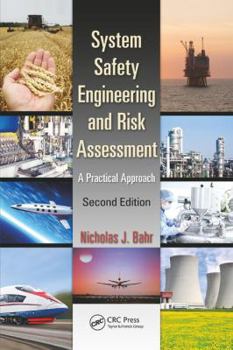System Safety Engineering And Risk Assessment: A Practical Approach (Chemical Engineering)
Select Format
Select Condition 
Book Overview
We all know that safety should be an integral part of the systems that we build and operate. The public demands that they are protected from accidents, yet industry and government do not always know how to reach this common goal. This book gives engineers and managers working in companies and governments around the world a pragmatic and reasonable approach to system safety and risk assessment techniques. It explains in easy-to-understand language how to design workable safety management systems and implement tested solutions immediately.
The book is intended for working engineers who know that they need to build safe systems, but aren't sure where to start. To make it easy to get started quickly, it includes numerous real-life engineering examples. The book's many practical tips and best practices explain not only how to prevent accidents, but also how to build safety into systems at a sensible price. The book also includes numerous case studies from real disasters that describe what went wrong and the lessons learned.
See What's New in the Second Edition:
New chapter on developing government safety oversight programs and regulations, including designing and setting up a new safety regulatory body, developing safety regulatory oversight functions and governance, developing safety regulations, and how to avoid common mistakes in government oversight Significantly expanded chapter on safety management systems, with many practical applications from around the world and information about designing and building robust safety management systems, auditing them, gaining internal support, and creating a safety culture New and expanded case studies and "Notes from Nick's Files" (examples of practical applications from the author's extensive experience) Increased international focus on world-leading practices from multiple industries with practical examples, common mistakes to avoid, and new thinking about how to build sustainable safety management systems New material on safety culture, developing leading safety performance indicators, safety maturity model, auditing safety management systems, and setting up a safety knowledge management system




